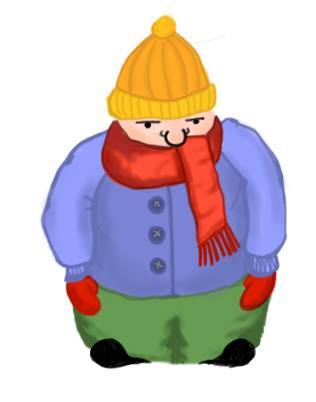
Two months ago, Inklings published an article detailing the Farmer’s Almanac prediction of a very cold, snowy winter.
“Below average temperature for two-third’s of the nation,” was the threat that loomed over Connecticut as we entered into the months of December, January and February.
Now this no longer a threat, rather a harsh reality, those below average temperatures have fallen onto the state of Connecticut. At Staples, with the school day starting at 7:30 and many faculty and students waking well before then,the early morning low degrees which delay the effectiveness of various car warmers make the drive to school that much colder for that much longer.
On Jan. 23 Staples’ students became especially aware of the inconveniences a cold winter could have when they were held outside for 20 minutes in the 5 degree chill while the Fire Department investigated a burst pipe.
Disgruntled and uncomfortable, the student body seemed collectively over the so-called polar vortex.
“I just want this winter to be over, I don’t ever remember it being this cold,” said Jamie Swotes ’15.
Swotes is not the only one who wouldn’t remember it ever being this cold because historically during January and February, Connecticut usually hovers between 18 and 40 degrees. This year it seems we’ve been experiencing the lower end of those projections.
Scott Pecoriellio ’15, founder of the blog “Wild About Weather” and up and coming meteorologist, explained that this winter is particularly cold because of a phenomenon known as the “Polar Vortex” that allows a ridge to develop in Alaska which continuously drives cold air in the US, sending temperatures down everywhere, including to Connecticut.
“We haven’t had a winter like this one in quite a while with such persistent cold weather. Even in the really snowy ones like 2010-2011, it didn’t get quite this cold for such a long period of time,” said Pecoriellio, “You’d have to go back a good decade or more to find this kind of cold.”
While the majority of one’s day may be spent inside Staples, it certainly doesn’t stop students from preparing to thoroughly to defend themselves against such forceful freezes.
“I wear wool socks, long johns, plus pants and a shirt and then two long sleeve layers and a jacket and a blue and purple hat and then I suck it up,” said Mike Moritz ’14 with a chuckle.
Nick Ribolla ’15 wears similar attire when he’s required to be outside during the Polar Vortex, and he calls his multitude of layers “The Whole Enchilada.” This would everything from thermal underwear to doubling up on sweaters and zipping it all off with a ski jacket. He spares no article of clothing when wrapping up for warmth.
Most days the temperature eventually climbs up to 30 or even 40 degrees, only to drop down to the teens for the night and stay there to freeze noses, fingers, and toes the next morning. Though this may be cold enough to send students jumping for their various thermal layers and knitted hats, one can be thankful that it’s not 1943 when Connecticut experienced its’ lowest recorded temperature of -37 degrees.













































